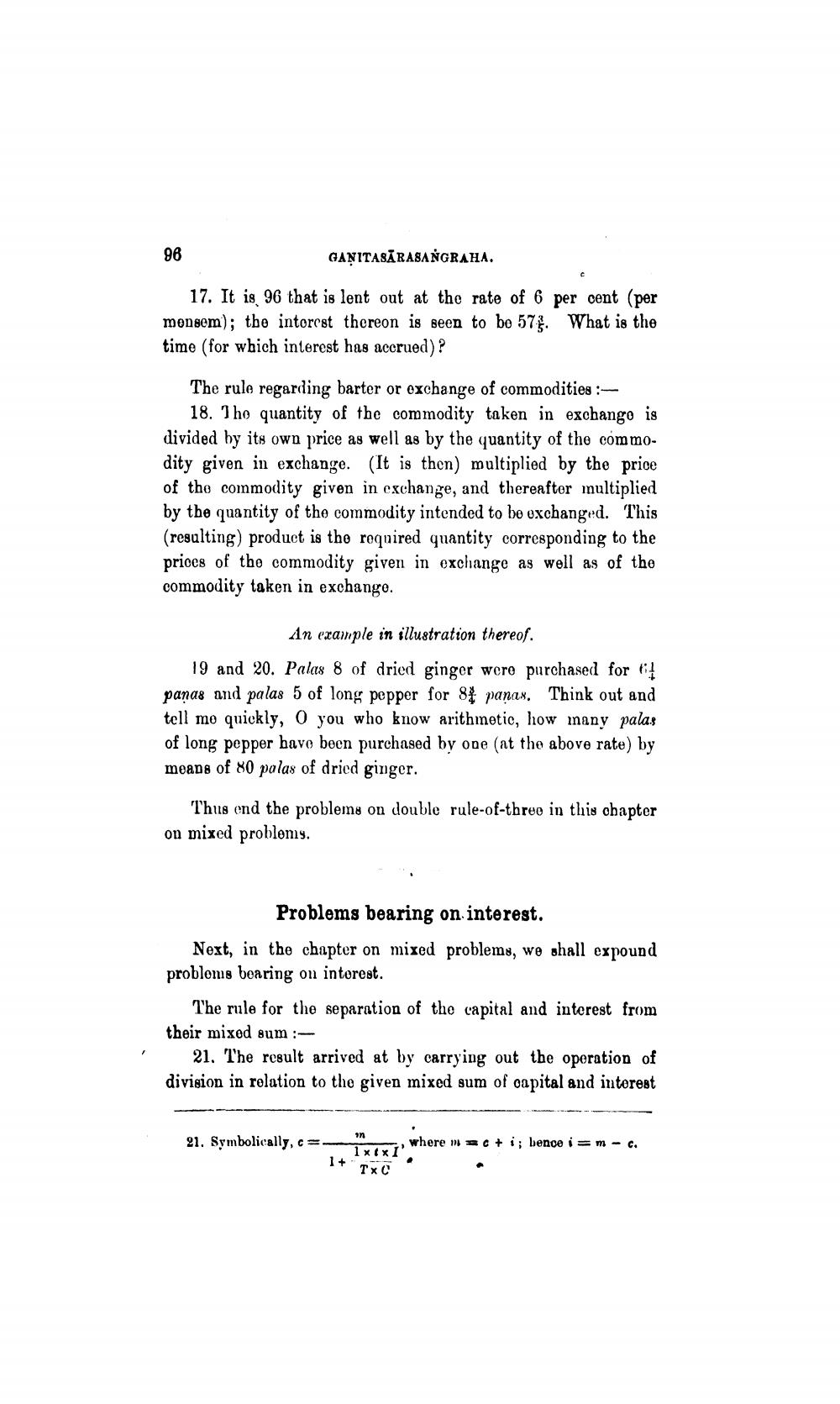________________
96
GANITASĀRASANGRAHA.
17. It is 96 that is lent out at the rate of 6 per cent (per mensem); the interest thereon is seen to be 57. What is the time (for which interest has accrued)?
The rule regarding barter or exchange of commodities :
18. I ho quantity of the commodity taken in exchango is divided by its own price as well as by the quantity of the commodity given in exchange. (It is then) multiplied by the price of the commodity given in exchange, and thereafter multiplied by the quantity of the commodity intended to be oxchanged. This (resulting) product is the required quantity corresponding to the prices of the commodity given in exchange as well as of the commodity taken in exchange.
An example in illustration thereof.
19 and 20. Palas 8 of dried ginger were purchased for it panas and palas 5 of long pepper for 8 panas. Think out and tell mo quickly, O you who know arithmetic, how many palas of long pepper have been purchased by one (at the above rate) by means of 80 polas of dried ginger.
Thus end the problems on double rule-of-three in this chapter on mixed problemy.
Problems bearing on interest.
Next, in the chapter on mixed problems, we shall expound problons bearing on interest.
The rule for the separation of the capital and interest from their mixed sum :
21. The result arrived at by carrying out the operation of division in relation to the given mixed sum of capital and interest
21. Symbolically,
c
x x1
, where m
c
+ i; bende i=m
-
c.
1+ TxC




